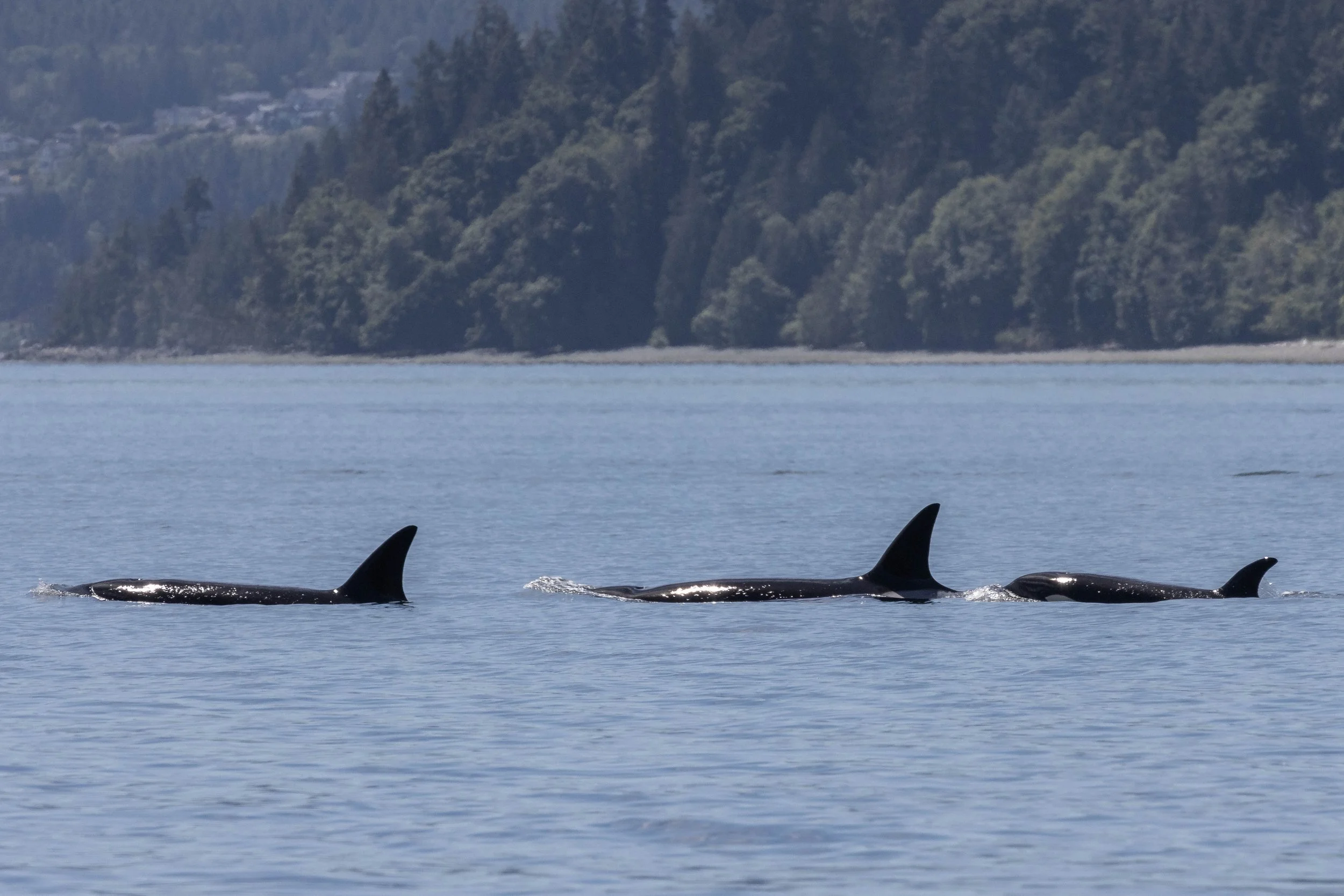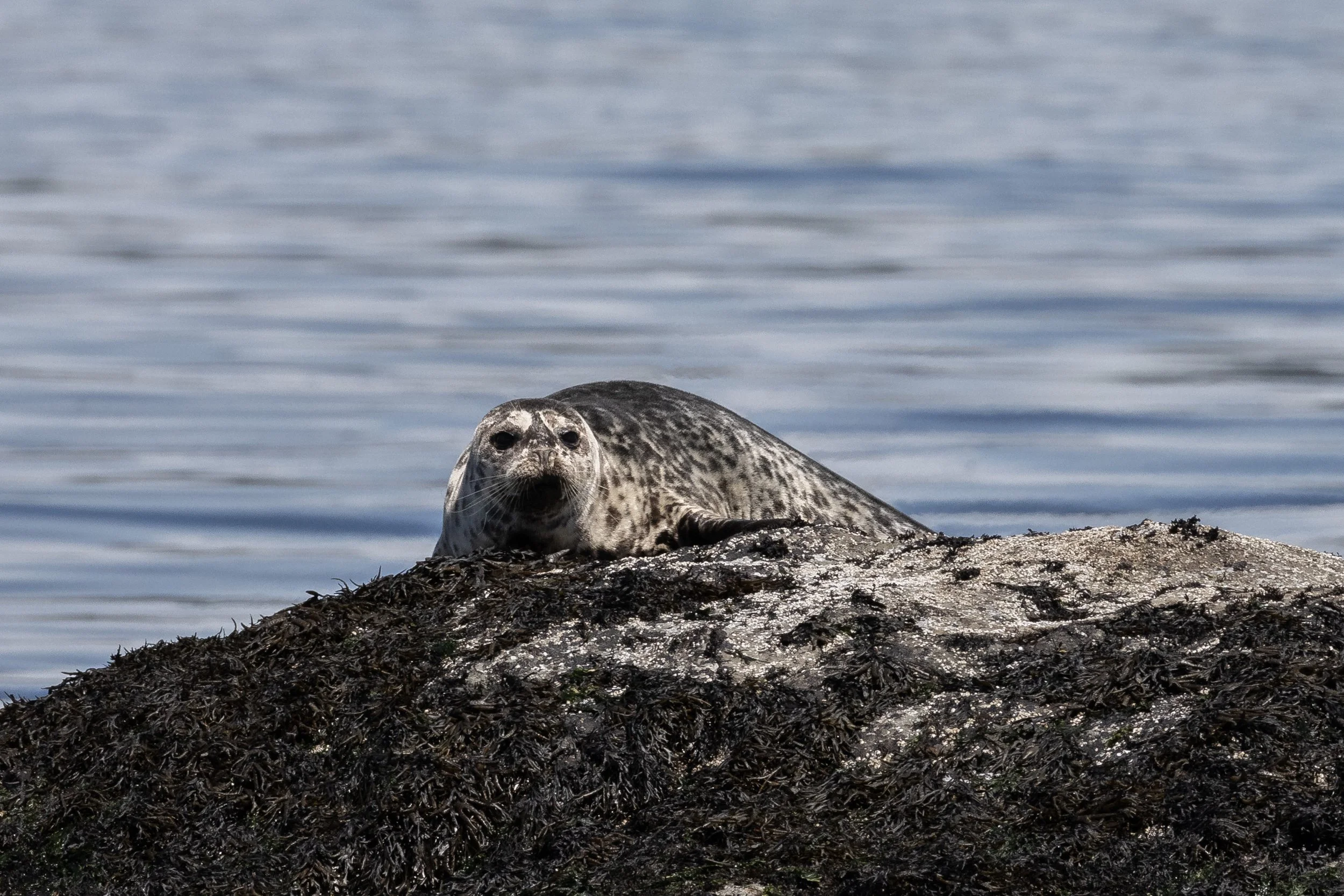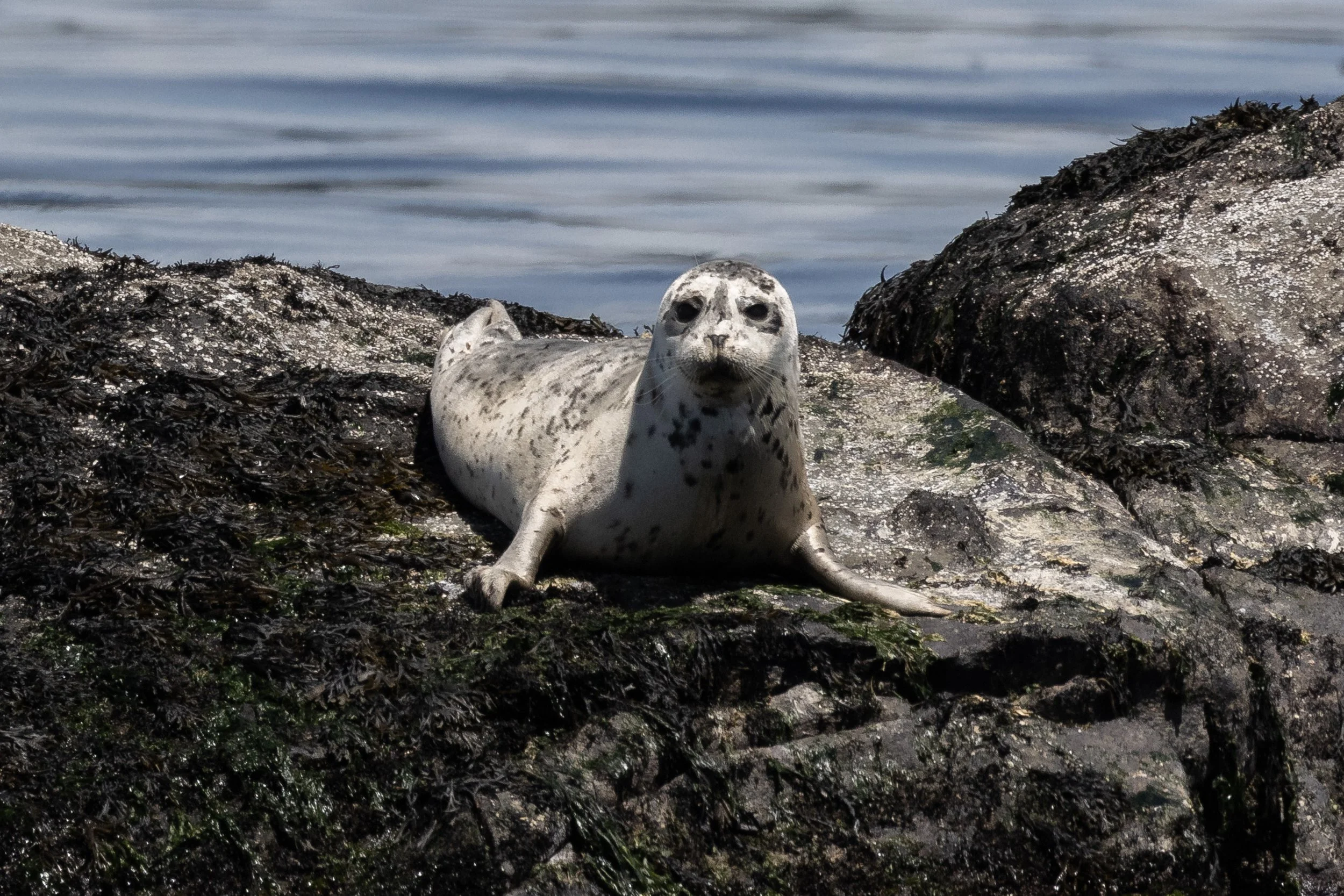June 6, 2024, 10:30am - A pleasant morning with the T075Bs
We had another lovely morning on the water. We left the dock on our semi-covered vessel Kula and headed into the beautiful southern gulf islands. On nice calm mornings, the water is like glass as we head towards Salt Spring Island. Finally, we find today’s family in Samsun Narrows! Today’s pod is the the T075Bs, and this family currently consists of 4 members.
T075B Pebbles ♀ (1995)
T075B2 Jasper ♀ (2015)
T075B3 Rubble (2017)
T075B4 (2021)
Pebbles is the matriarch of this small family. Last summer brought on a great deal of excitement, as a new calf had appeared amongst them. Everyone assumed this was T075B Pebbles's newest calf, but as the calf was seen with this little family more and more, we realized it wasn’t matriarch Pebbles who gave birth to the newest addition, but instead belonged to T075B2 Jasper! Females usually begin to produce calves around 15 years old. Jasper was significantly younger than the expected age, at only 8 years old at the time of this new calf’s arrival. We couldn’t believe it!
The way we determine maternity within a pod, especially one with several females of reproductive age, is by looking to see who the calf travels in '“echelon position” with. Echelon position is defined by the proximity and position of a new calf and its mother. Because a mother wants to reduce the drag on a young baby while swimming with the pod, she positions the calf directly behind her dorsal fin, effectively riding in her slipstream. This allows mom to do most of the work cutting through the water, so a young calf doesn’t tire as easily and can keep up with the family! This position is also especially important for a new baby, as they have to come up for air much more often than their older family members. This way, mom can push the little one up to the surface to help, something we saw last year with Jasper’s young kiddo.
Unfortunately for Jasper, her calf did not survive the summer. High infant mortality rate is a sad reality for orca around the world, with only about 50% of calves surviving. There are many possible reasons why this young whale failed to make it to their first birthday. Orca are apex predators, consuming a diverse and large amount of other animals in the area. Unfortunately, when they consume other animals, they accumulate a significant amount of POPs - persistent organic pollutants (chemicals that take a very long time to break down) in their blubber. POPs are then passed down in utero and through a mother’s milk. The firstborn calf often takes the brunt of the POPs so hopefully, Jasper’s next calf will fare much better! Being a very young mother and giving birth much earlier than expected could have also had an impact of the calf’s survival. Either way, it’s a tough ocean out there and we look forward to seeing what future years bring this pod!
While it’s always tough to mourn the loss of a calf, we had a wonderful time with the T075Bs and got some great pictures. We finished off the tour checking out the sleepy California Sea Lions and the sweet Harbour Seals as they basked on the rocks.
Photos taken by naturalist Lucy Willis.
T075B3 Rubble showing off their beautiful eyepatch.
T075B Pebbles with her eldest daughter T075B2 Jasper.
Did you know orca are the largest member of the dolphin family? All dolphins are whales but not all whales are dolphins!
The family swimming towards the camera!
Did you know we can use the dorsal fin, saddle patch and eyepatch all as identifiers for our whales? Looking at this eyepatch, we can see this is T075B2 Jasper!
If you look at the saddle patch on the middle whale you might see what looks like a sunrise. This is one way we can identify matriarch Pebbles.
T075B2 Jasper, T075B Pebbles, and T075B4. Family photo!
Orca with mount Baker in the background
Look at how wonderfully our harbour seals blend into their surroundings.
We think harbour seals are so cute, but it’s important to keep in mind that these are wild animals that deserve respect and space.
Did you know harbour seals have claws on their flippers?
2 male California sea lions having a little argument.
Male California sea lions have a sagittal crest, seen here as the little tuft of blond fur on his head!













